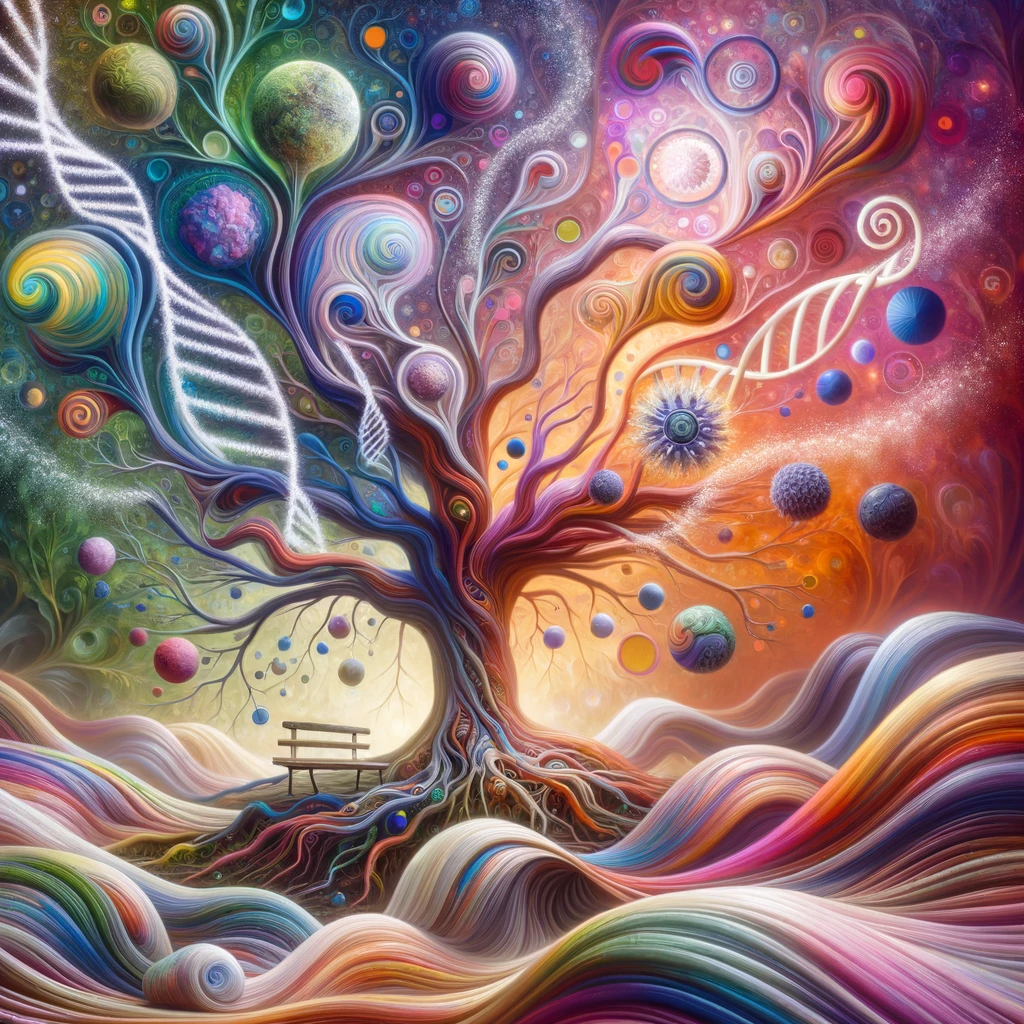Relationships are the vibrant threads weaving life’s tapestry. From the romantic spark igniting passion to the steady flame of friendship, we navigate a sea of human connections. Whether it’s the professional bond with a colleague or the deep-rooted love of family, these ties shape our world, defining our experiences.
As we explore the spectrum of romantic relationships, prepare for a journey through love’s diverse landscape in our modern world.
The Spectrum of Romantic Relationships
The landscape of affection spans a vibrant spectrum, each bond as unique as the people involved. From traditional pairs to fluid arrangements, relationships continue to evolve, challenging norms and expanding our understanding of intimacy.
Let’s explore the varied hues of romantic connections:
- Monogamous Partnerships: The classic one-on-one dynamic, involving deep emotional investment and long-term planning.
- Open Relationships: A flexible approach, allowing partners to explore sexual or emotional connections outside the primary pair.
- Polyamorous Arrangements: Multiple loving relationships with full knowledge and consent of all involved.
- Casual Dating: Light-hearted connections without serious commitment, perfect for exploring needs and preferences.
- Long-Distance Love: Geographically separated sweethearts maintaining bonds through technology and occasional visits.
Each person must establish what works best for them, as there’s no one-size-fits-all approach. It’s important to clearly describe desires and choose a path aligning with personal values.
Healthy relationships share common terms: trust, respect, and open dialogue. These elements help partners navigate intimacy’s complexities and foster growth.
While romantic bonds are crucial, platonic connections are equally vital. Let’s explore how friendships contribute to personal growth and emotional well-being.
Platonic Connections: The Power of Friendship
In the tapestry of human relationships, platonic bonds shine uniquely. These connections offer a sanctuary of trust and understanding. Friends serve as our chosen family, mirroring our souls and fostering growth.
Unlike romance’s rollercoaster, platonic friendships provide steadier ground. They’re the confidants who listen without judgment, celebrate our triumphs, and support us through storms. As one wise soul mused:
A true friend is a lighthouse in life’s fog, guiding us safely to shore when we’ve lost our way.
These bonds transcend mere acquaintances, shaping our character and challenging us to improve. Research refers to friendship as crucial for longevity and mental well-being, providing emotional resilience and reducing stress.
In our increasingly online world, nurturing authentic friendships becomes both challenge and addiction. Yet, these efforts yield dividends in happiness and self-discovery. True friends care deeply, offering honesty and compassion that other relationships may lack.
As we shift our focus from personal relationships to the professional realm, we’ll uncover the unique dynamics that shape our interactions in the workplace.
Professional Relationships: Navigating the Workplace
In the corporate arena, professional relationships form the backbone of success. These dynamic connections range from mentor-mentee bonds to peer collaborations, each playing a crucial role in career advancement and workplace harmony. Let’s delve into the intricate web of office interactions:
| Relationship Type | Key Characteristics | Benefits | Challenges |
|---|---|---|---|
| Mentorship | Guidance-focused, knowledge transfer | Career growth, skill development | Power imbalance, time management |
| Peer Collaboration | Equal footing, shared goals | Innovation, teamwork skills | Competition, conflicting ideas |
| Hierarchical | Authority-based, formal structure | Clear direction, organizational stability | Communication barriers, potential for abuse |
| Cross-departmental | Diverse expertise, project-oriented | Holistic problem-solving, networking | Misaligned priorities, cultural differences |
Navigating these varied dynamics requires emotional intelligence and adaptability. For instance, a mentorship might evolve into a peer relationship as the mentee grows, demanding a shift in interaction style. Similarly, cross-departmental collaborations often necessitate bridging communication gaps and aligning diverse work cultures.
Mastering the art of professional relationships involves honing skills like active listening, diplomatic communication, and conflict resolution. By cultivating a diverse network of workplace connections, individuals can create a robust support system that propels their career forward while fostering a positive work environment.
To make a good impression, consider each interaction as an opportunity to build your professional brand. Whether you’re collaborating with a partner on a project or presenting ideas to your sweetheart of a boss, maintaining professionalism is key. Remember, every type of workplace relationship contributes to your overall success.
Having explored various relationship types, let’s now turn our attention to the complex and ever-evolving dynamics within families.
Family Dynamics: Blood Ties and Chosen Families

The tapestry of modern families weaves a rich narrative of evolving relationships. Today’s families paint a vibrant portrait of diversity, challenging traditional norms and embracing new definitions of kinship. Blood ties now intertwine with chosen bonds, creating intricate networks of support and love.
Single parents, blended families, and LGBTQ+ partnerships reshape the landscape, while multigenerational households resurge, bridging cultural gaps. The rise of chosen families—groups bonded by shared experiences rather than genetics—adds another layer to this complex tapestry.
These shifts reflect broader societal changes: delayed marriages, increased acceptance of diverse lifestyles, and the prioritization of personal fulfillment. Yet, amidst this evolution, the core essence of family endures—a safe haven of unconditional love and support, adapting to the rhythms of our ever-changing world.
As we’ve seen how family structures have transformed, let’s delve deeper into the fascinating evolution of family dynamics over time.
The Evolution of Family Structures
Family structures have undergone a remarkable metamorphosis, reflecting societal shifts and evolving values. The nuclear family ideal has given way to a kaleidoscope of arrangements. Blended families now weave complex tapestries of step-siblings and co-parenting dynamics. Single-parent households, once stigmatized, have become a respected norm, challenging traditional notions of family composition.
The concept of chosen families has gained prominence, particularly within LGBTQ+ communities, where individuals create support networks based on shared experiences. This shift emphasizes emotional bonds over biological connections. Multigenerational households are experiencing a resurgence, driven by economic factors and cultural preferences.
These transformations reflect broader changes: increased acceptance of diverse lifestyles, delayed marriages, and focus on personal fulfillment. Despite these shifts, the essence of family—a haven of support and love—remains constant, adapting to our changing world.
While traditional relationships continue to evolve, a new frontier of connection has emerged in the digital age. Let’s explore how online relationships are reshaping our understanding of human connections.
Online Relationships: Connecting in the Digital Age
In the digital age, relationships have taken on new dimensions, transforming how we connect, communicate, and even fall in love. The internet has become a vast playground for human interaction, blurring the lines between virtual and physical realms. Social media platforms serve as modern-day town squares, where connections blossom over shared memes and heartfelt comments. Virtual communities unite like-minded individuals across continents, fostering bonds that transcend geographical boundaries.
Online dating apps have revolutionized the pursuit of romance, turning the search for a soulmate into a swipe-right adventure. These digital cupids have redefined courtship, allowing individuals to explore potential matches from the comfort of their homes. However, this convenience comes with its own set of challenges and rewards:
- Expanded dating pool beyond local constraints
- Option to find prospective matches according to customized criteria
- Risk of misrepresentation and catfishing
- Convenience in scheduling and communication
- Potential for superficial judgments based on limited information
- Opportunity to connect with individuals sharing niche interests
- Challenge of translating online chemistry to real-world compatibility
- Increased exposure to diverse perspectives and cultures
- Risk of digital addiction and decreased face-to-face social skills
As we navigate this digital landscape, it’s crucial to approach online relationships with both enthusiasm and caution. While technology offers unprecedented opportunities for connection, it’s essential to cultivate authenticity and emotional intelligence in our virtual interactions. Balancing screen time with real-world experiences can lead to more fulfilling and well-rounded relationships.
As we navigate the complexities of various relationship types, the challenge of balancing multiple connections becomes apparent. Let’s explore the art of juggling different relationships in our lives.
Balancing Multiple Relationships: The Art of Juggling
Juggling multiple relationships is a delicate balancing act, akin to a high-wire performance where every step matters. Mastering prioritization and boundary-setting is crucial. Imagine your time and energy as precious resources, carefully allocated among various connections. Like a gardener tending different plants, nurture each relationship with tailored attention.
Consider implementing a ‘relationship rotation’ system, dedicating specific time slots to different connections. Embrace quality over quantity, making each interaction meaningful. Leverage technology wisely, using group chats or video calls to maintain multiple connections simultaneously.
Healthy boundaries are the safety nets in your relationship circus. They protect you from burnout while fostering mutual respect and independence. As relationship expert Dr. John Gottman notes, “The strongest relationships are those where partners can say no to each other.”
Crucially, prioritize self-care in this intricate dance. Your relationship with yourself forms the foundation for all other connections. By maintaining a strong sense of self, you’ll bring your best to every interaction, creating a harmonious symphony of relationships that enrich your life.
Having mastered the art of balancing relationships, let’s examine how different types of connections contribute to our personal growth and overall well-being.
The Impact of Relationship Types on Personal Growth
The tapestry of relationships we weave throughout life acts as a catalyst for personal evolution, each interaction leaving an indelible mark on our psyche. This diverse array of connections becomes a mirror, reflecting our strengths and revealing areas for growth.
Romantic partnerships challenge us to confront vulnerabilities, pushing us beyond comfort zones. They demand compromise, teaching the delicate art of balancing individual needs with shared goals. Through intimacy, we develop deeper empathy and effective communication skills.
Platonic bonds foster resilience and broaden perspectives. They provide safe spaces for self-expression and experimentation, allowing us to explore different facets of our personality. The unconditional support bolsters self-esteem and encourages pursuit of aspirations.
Family ties, whether biological or chosen, shape core values and worldviews. They instill a sense of belonging and teach the importance of forgiveness and unconditional love. Navigating these dynamics hones conflict resolution skills and emotional intelligence.
Ultimately, each relationship contributes to our personal growth mosaic, refining character and expanding our capacity for connection and understanding.
While relationships can be a source of growth and fulfillment, they also come with their fair share of challenges. Let’s explore common hurdles in various relationship types and strategies to overcome them.
Navigating Challenges in Various Relationship Types
Navigating the labyrinth of relationships often feels like walking a tightrope without a safety net. Each connection brings unique hurdles, demanding tailored approaches. Let’s unravel these challenges and explore effective strategies:
| Relationship Type | Common Challenges | Effective Solutions |
|---|---|---|
| Romantic | Communication breakdowns, trust issues | Practice active listening, schedule regular check-ins |
| Familial | Unresolved past conflicts, generational gaps | Embrace open dialogue, seek professional mediation |
| Platonic | Boundary issues, evolving life stages | Establish clear expectations, nurture shared interests |
| Professional | Power imbalances, competitive dynamics | Foster mutual respect, focus on collaborative goals |
The key to surmounting these obstacles lies in cultivating emotional intelligence, practicing empathy, and maintaining open communication. By viewing each challenge as a growth opportunity, we transform our relationships into resilient, nurturing bonds that withstand time’s test. Remember, healthy relationships require consistent effort and adaptability to thrive in our ever-changing world.
Now that we’ve explored the intricacies of different relationship types, let’s address some frequently asked questions to further clarify and expand on these concepts.
Frequently Asked Questions About Different Types of Relationships
What are the main types of relationships?
Relationships encompass a diverse spectrum, from familial bonds to platonic friendships and professional associations. Each offers unique dynamics, from unconditional love to shared goals. Some connections blur boundaries, like mentorships or situationships, adding complexity to our interpersonal tapestry.
Let’s explore how to determine which type suits you best.
How do I define the right relationship?
Discovering your ideal relationship requires self-reflection and assessing your values, goals, and emotional needs. Trust your intuition and observe how different connections affect you. Experiment with various dynamics, prioritizing mutual respect and open communication. The right relationships align naturally with your authentic self.
Can someone have multiple types of relationships simultaneously?
Absolutely! We’re multifaceted beings, capable of nurturing various relationships simultaneously. From family to friends, romantic partners to colleagues, we cultivate a rich tapestry of interactions. Each connection fulfills different emotional needs, contributing to a well-rounded social life and personal growth.
How do online relationships differ from in-person relationships?
Online relationships thrive on instant digital connectivity, fostering deeper emotional bonds before physical meetings. They offer curated self-presentation and slower-paced interactions. However, they lack non-verbal cues and spontaneous shared experiences, potentially creating idealized perceptions.
What are the key components of a healthy relationship, regardless of type?
Healthy relationships flourish with mutual respect, trust, and open dialogue. Emotional support, empathy, and compromise are vital. Setting boundaries and fostering individual growth alongside shared experiences are key. Honesty, accountability, and forgiveness form the foundation of enduring connections, regardless of their nature.
How can I improve communication in different types of relationships?
Enhance communication across relationships through active listening and empathy. Use “I” statements to express feelings without blame. Embrace non-verbal cues and adapt communication styles to different dynamics. Regular check-ins foster open dialogue, preventing misunderstandings and strengthening bonds.
What are the signs of a toxic relationship, and how can I address them?
Toxic relationships often involve control, manipulation, and disrespect. Address issues through open communication and setting boundaries. Seek professional help if needed. Prioritize your well-being; if improvement attempts fail, consider ending the relationship for your mental health. Cultural differences significantly shape our interactions.
How do cultural differences impact various types of relationships?
Cultural differences shape relationships, influencing communication styles and values. From collectivist versus individualist mindsets to varying personal space concepts, these nuances create growth opportunities. Understanding and respecting diversity fosters richer, more empathetic connections across all relationship types.
Emotional intelligence is crucial in navigating cultural differences. Let’s explore its impact.
What role does emotional intelligence play in managing different relationships?
Emotional intelligence is the cornerstone of successful relationships. It empowers us to manage our emotions and respond empathetically to others. This skill fosters deeper connections, facilitates conflict resolution, and promotes understanding across diverse interactions. Cultivating self-awareness shapes our decision-making and interpersonal dynamics.
How can I maintain boundaries in various types of relationships?
Maintaining boundaries in relationships requires clear communication and self-awareness. Set explicit limits on time, energy, and emotional investment. Practice saying “no” without guilt. Regularly reassess and adjust boundaries as needed. Respect others’ limits while enforcing your own. Seek support when navigating challenging situations. Remember, healthy boundaries foster stronger connections.











